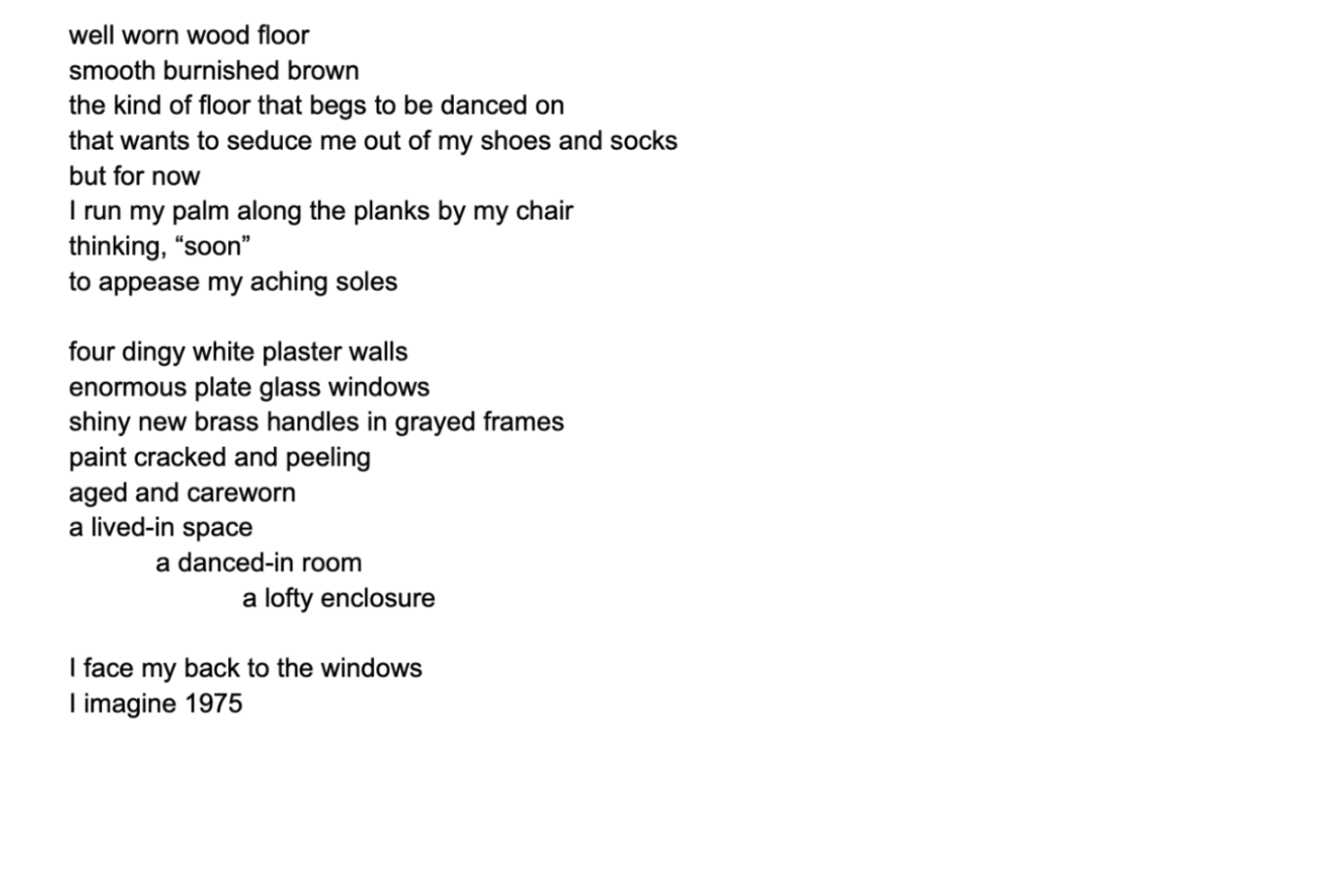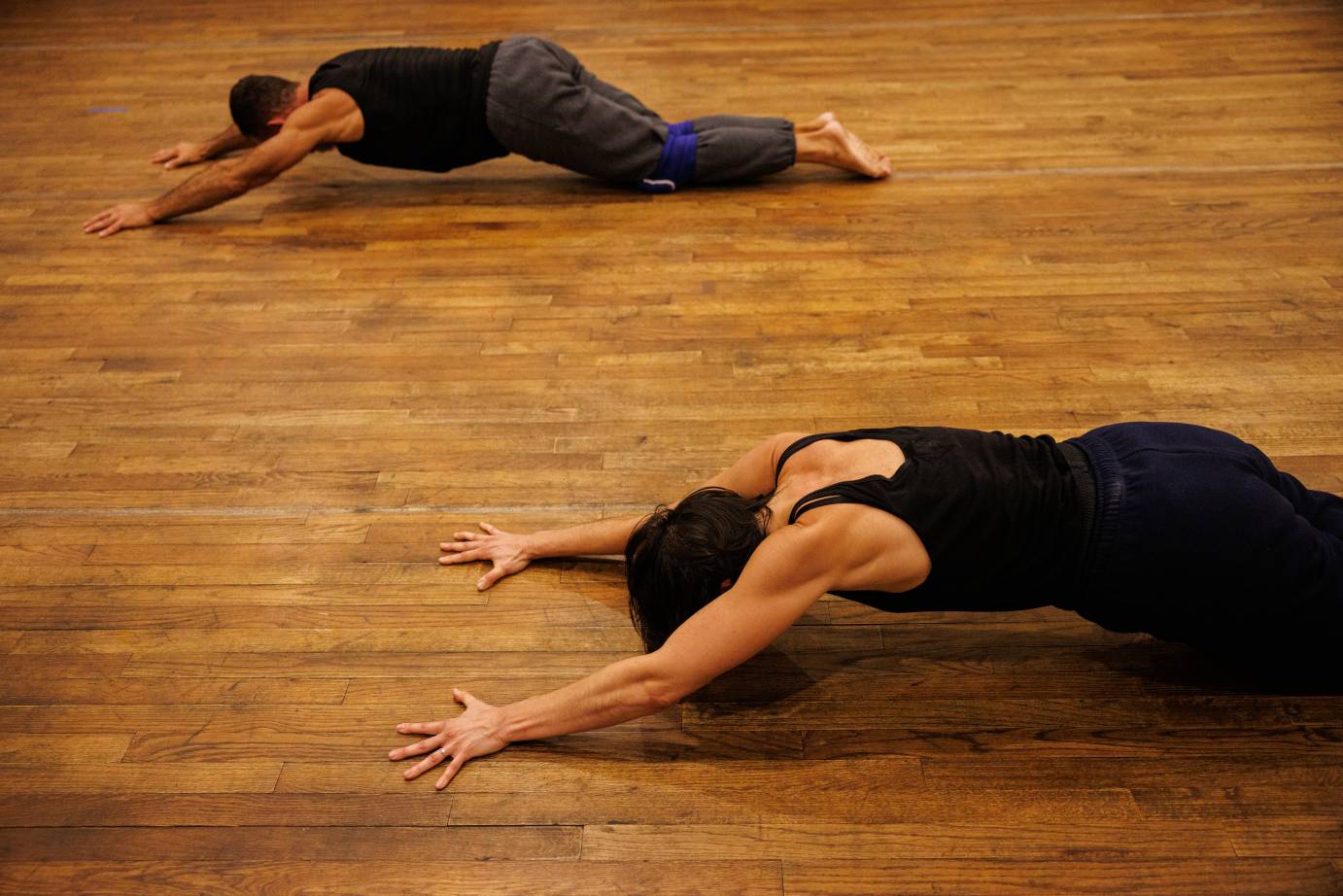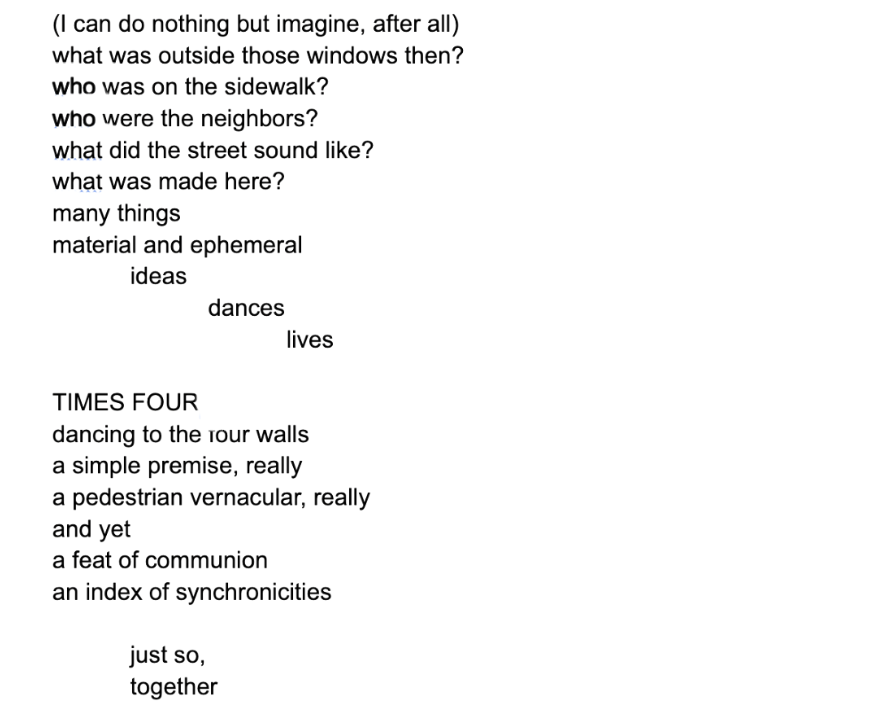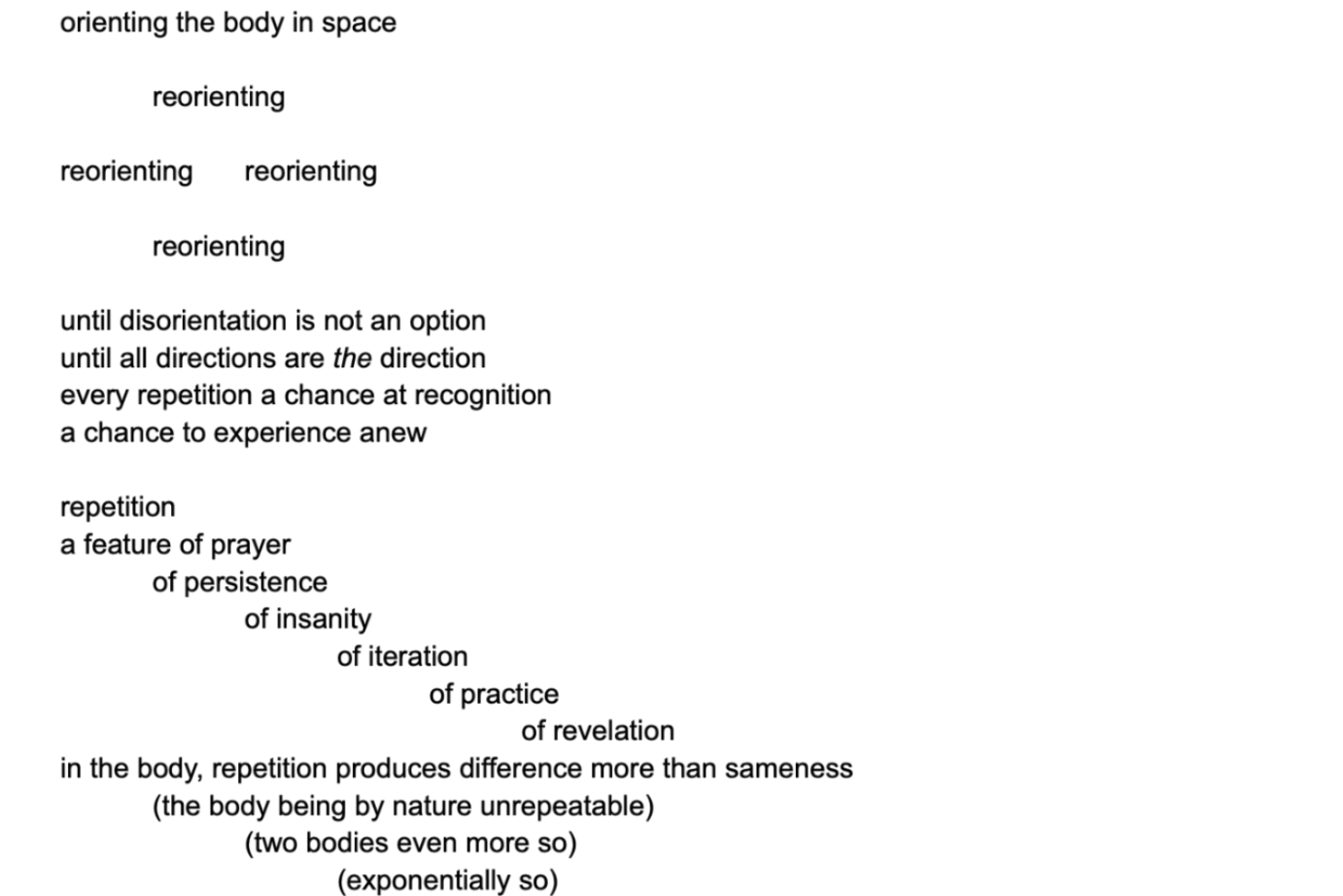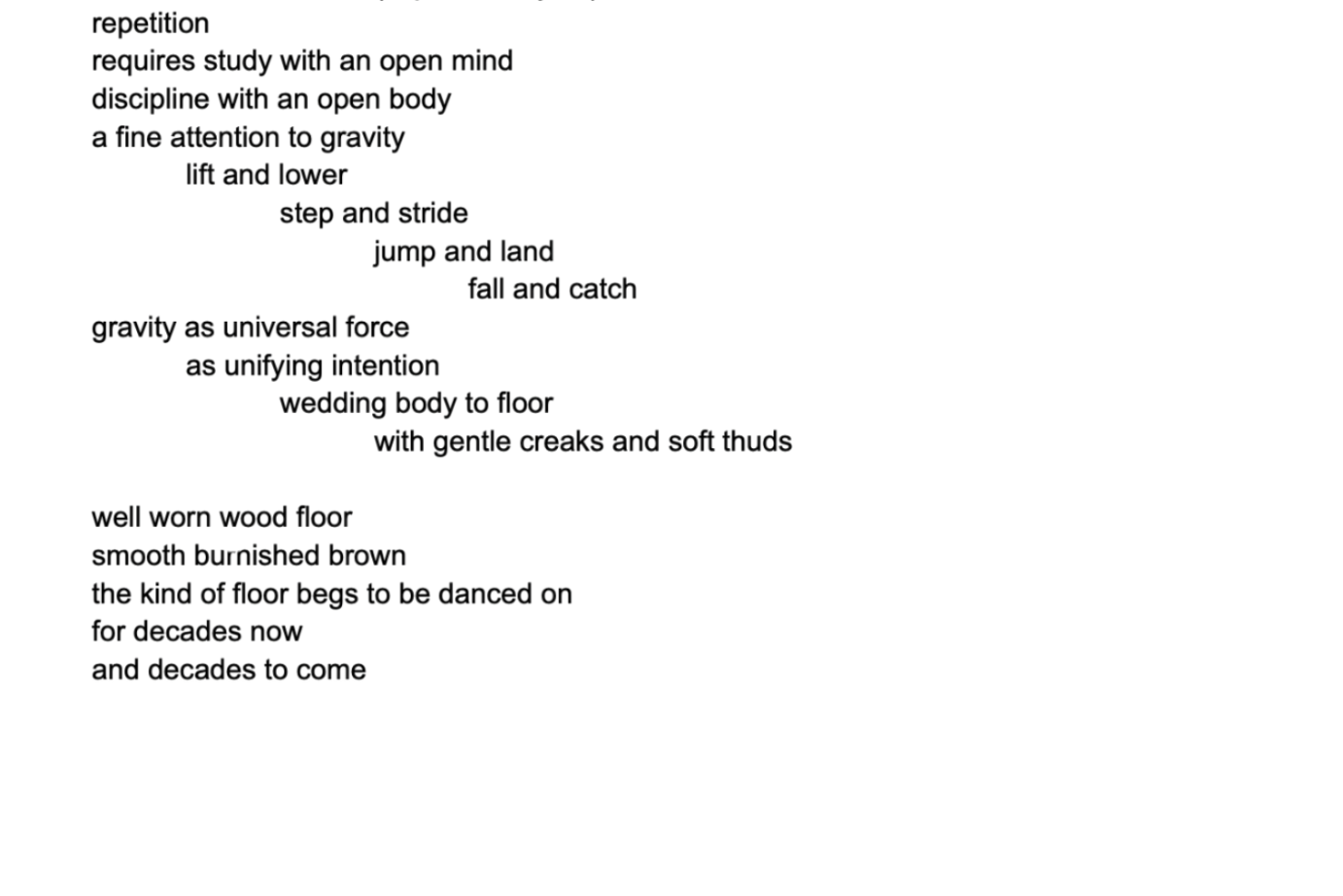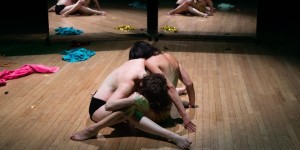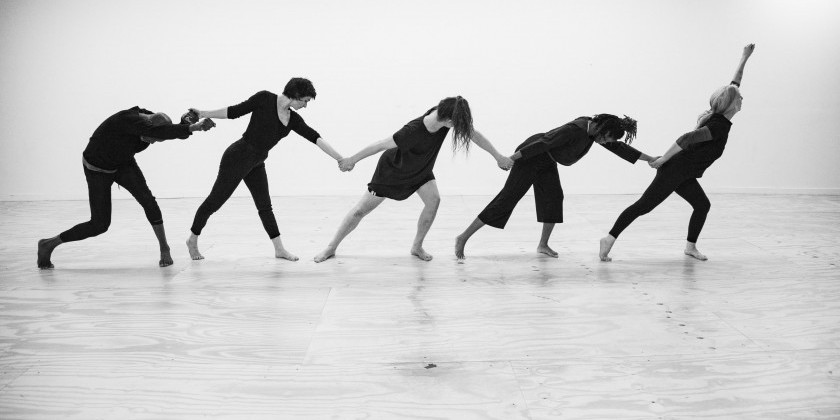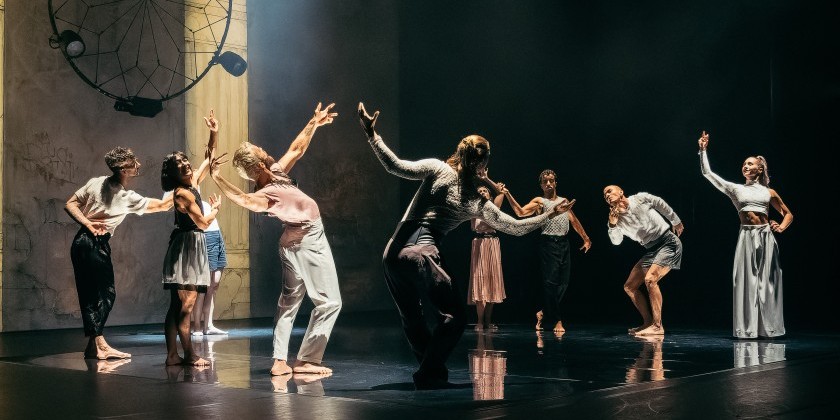IMPRESSIONS: Wally Cardona & Molly Lieber “TIMES FOUR / David Gordon: 1975/2025” at 541 Broadway

Original 1975 Choreography: David Gordon
Original Performers: David Gordon and Valda Setterfield
Additional 2025 Choreography: Wally Cardona
Performers: Wally Cardona and Molly Lieber
Stage Manager: Ed Fitzgerald
Producer: Alyce Dissette
A Pick Up Performance Co. production with WCV Inc.
Co-presented by Pick Up Performance Co. and New York Live Arts
October 25, 2025
David Gordon’s TIMES FOUR, originated 50 years ago as a duet for himself and Valda Setterfield, his creative and life partner, returns in a tenderly rigorous reconstruction and revisioning by Wally Cardona, who performs the work alongside Molly Lieber. Co-presented by New York Live Arts and Pick Up Performance Co., the work takes on new life in the same second floor Soho loft where it had its first performance—and where Gordon and Setterfield lived and worked for decades. Due to popular demand and limited seating, Cardona and Lieber recently extended their run through November 15.
Tickets and information for November 4-8 through New York Live Arts
Tickets for the extended run November 12-15 through Pick Up Performance Co.
An impressive archive of Gordon’s life and work is available on his Archiveography website, which houses a multimedia collection of photos, videos, writing, and memorabilia that attests to the near boundless range of the artist’s creative mind. Materials for TIMES FOUR include arresting photos of Gordon and Setterfield, show programs, and part of the work’s original score, which Cardona used to reconstruct the dance along with bits of rehearsal footage and informed by longstanding creative dialogue with Gordon, whose work he began performing in 2018 (Gordon was also Cardona’s father-in-law).

Writing about the work, spanning 1976 to 1980, includes keenly observant and insightful pieces by Sally Banes, Jennifer Dunning, Deborah Jowitt, Wendy Perron, and Marcia B Siegel, as well as an interview with Nancy Stark Smith—copious and storied discourse, both then and now. Decades on, Gia Kourlas contextualizes the historical work, the artists, the space, and the process behind the contemporary rendition of “TIMES FOUR” in a reflective New York Times feature. All of the above are highly recommended reading for viewers of this dance and dance history nerds alike, though the steps themselves and the bodies performing them speak volumes of their own accord.
All this pre-show research put me in a reflective mood as I wove through dense Soho crowds on a crisp fall evening. I was grateful to enter a brief reprieve in the loft—a suspension of time in a space of artistic sanctuary that offered both transportive focus and imaginative flight. A notorious early bird, I found myself scribbling in my notebook as the loft slowly filled with audience members bundled by elevator in batches to disperse among the metal folding chairs lining the four walls. As we quieted into observant collectivity, the space’s intimacy and exposure prompted me to put away my notebook and be with the dance.

“TIMES FOUR” is an extraordinarily absorbing dance—Cardona and Lieber equally absorbing performers—of pristine pedestrian and athletic clarity activated by a deft undercurrent of mechanical and compositional wit. In just over an hour (which feels like either twenty minutes or three days), Cardona and Lieber hone focus and take flight through rhythmic repetitions and fractal departures in breathtaking unison, accompanied only by the sounds of their weight on the floor.
